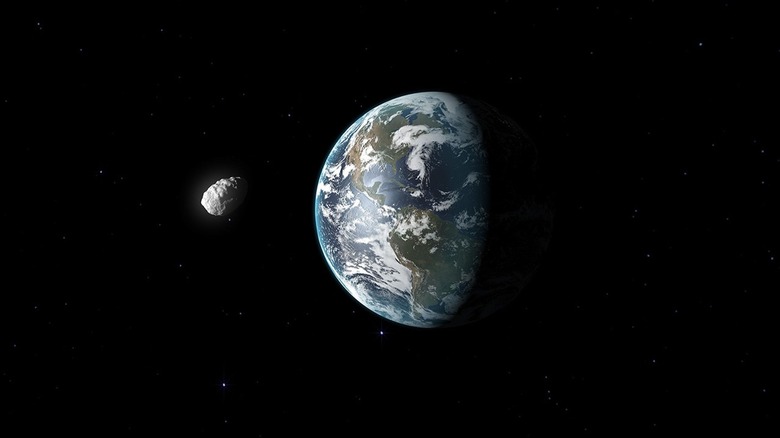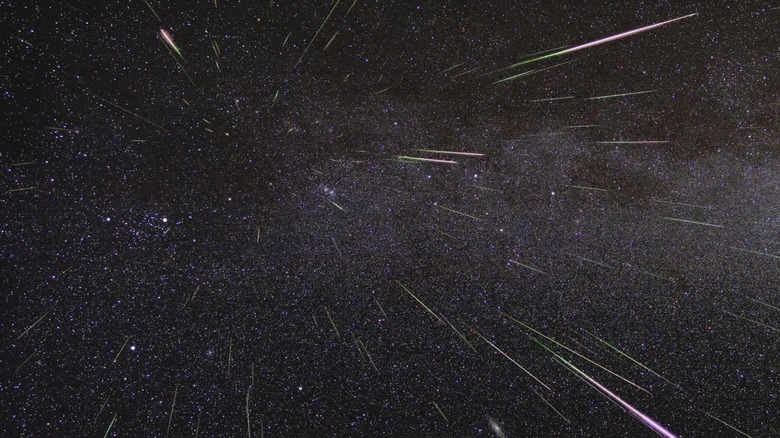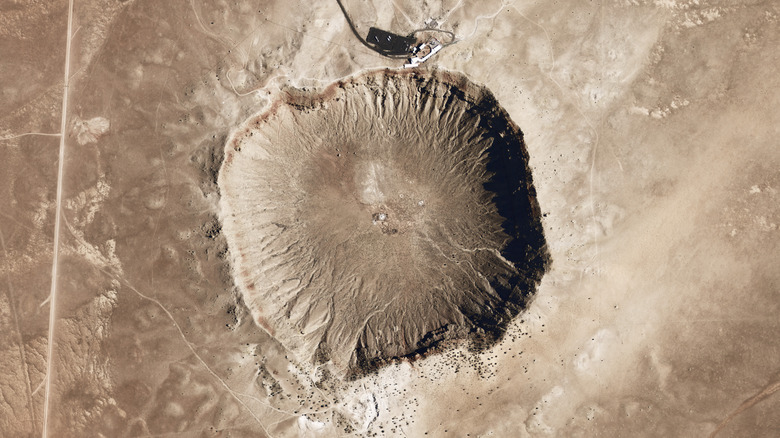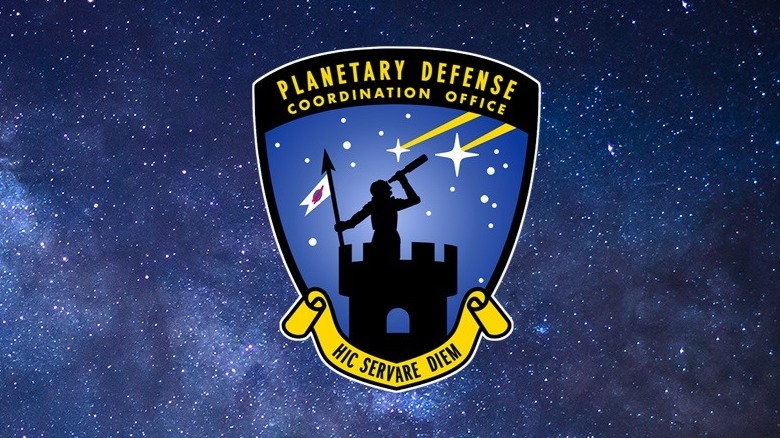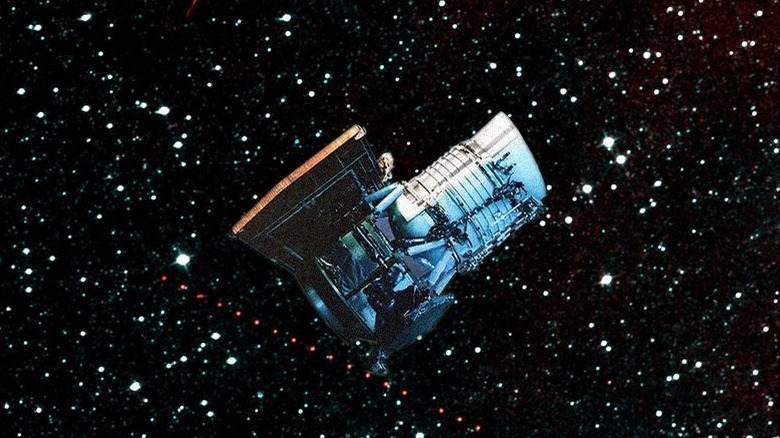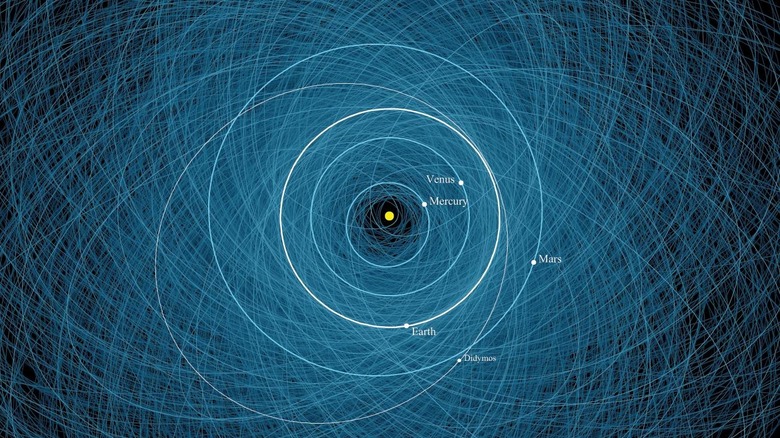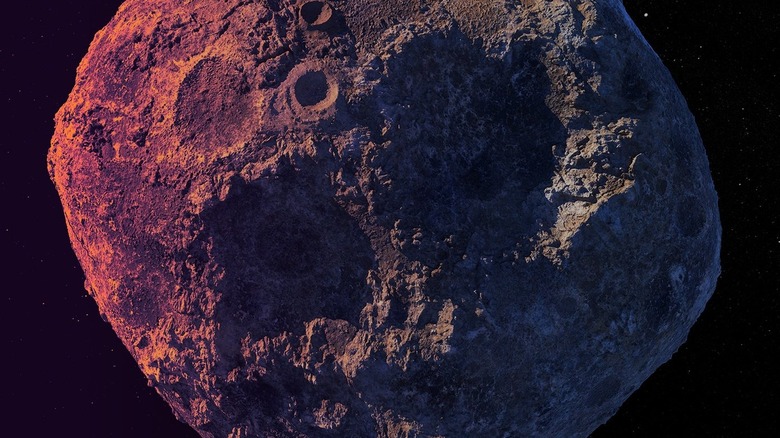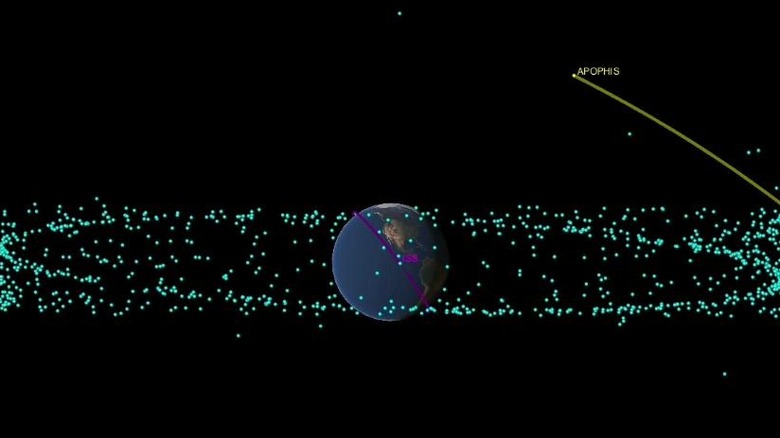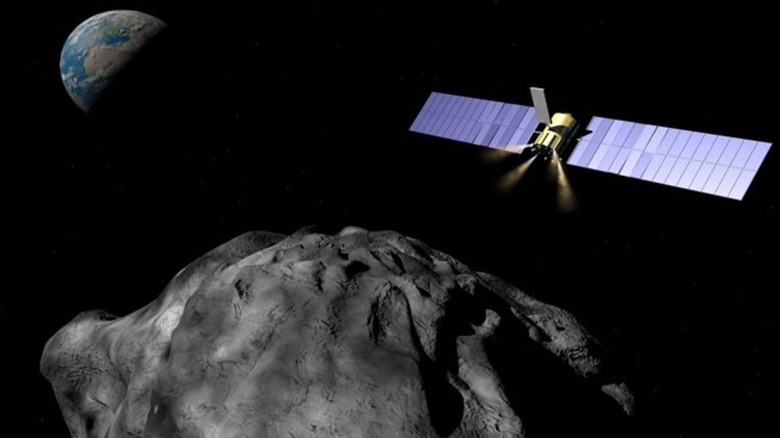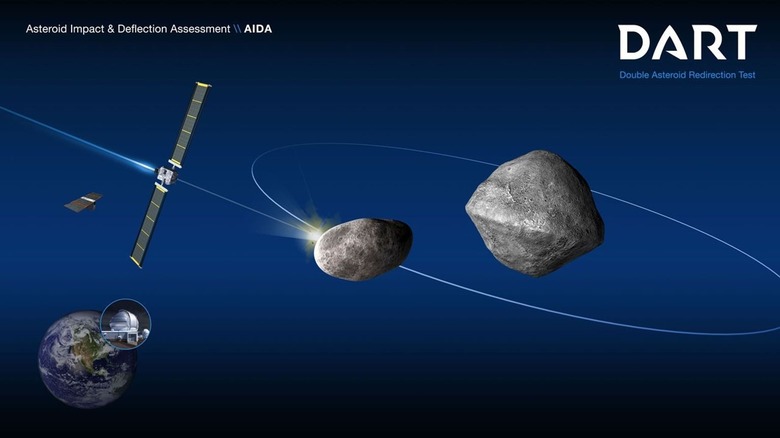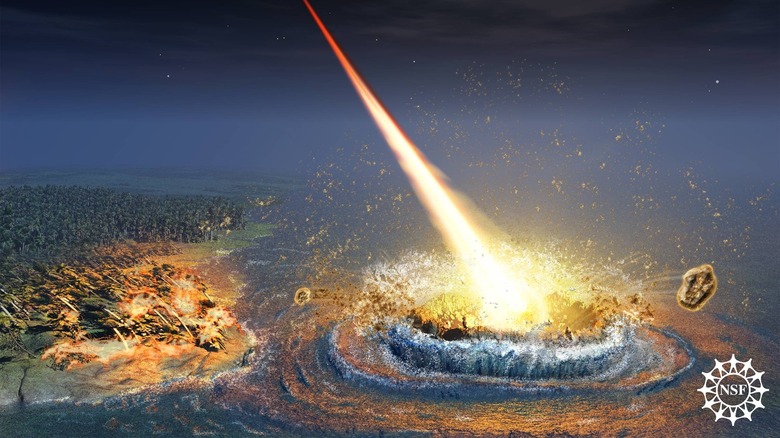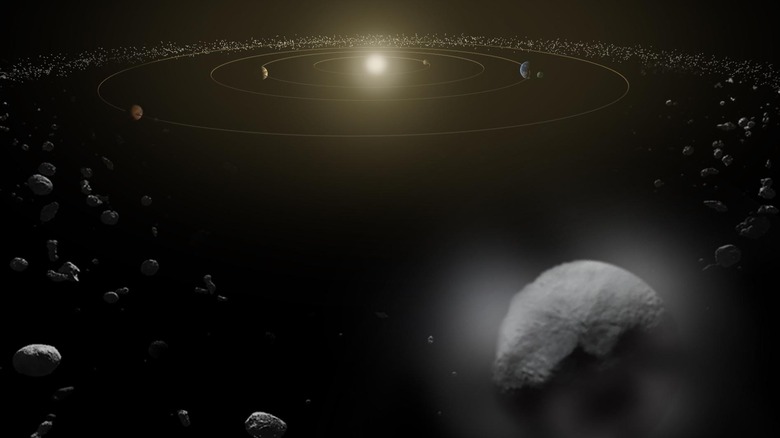Asteroids And Earth's Fate: Are We Really Prepared To Prevent A Catastrophe?
In the early days of the solar system asteroid impacts were much more common than they are today. While the planets were still forming there were plenty of planetary construction materials still orbiting the sun, searching for a home. The planets, the moons, and all that excess debris orbited the sun like so many cars whipping around a great cosmic roundabout. In the solar system's youth, traffic was thick and collisions were common. Over time, traffic cleared out and collisions became less frequent.
Of course, they kept happening. Approximately 66 million years ago our planet was rocked by an asteroid roughly six miles wide. The impact and its ensuing consequences wiped the non-avian dinosaurs from the face of the Earth and cleared the way for the age of mammals. In a manner of speaking, an asteroid impact brought us into this world and another one could take us out again.
On a long enough time scale, a killer asteroid impact is an inevitability. Without intervention, the slow turning of physics, the motion of the planets, and the gentle tug of gravity will conspire to sucker punch our planet eventually. Fortunately, we're more prepared for an impact than at any other point in the history of our planet. Just how prepared? Read on.
Earth is bombarded constantly
It's been about 4.5 billion years since the birth of the solar system and we're fortunate to have arrived at a comparatively calm period in its history. Earth is not getting blasted by large impactors at the rate it once was, but its still getting a fair share of collisions. In fact, if you gathered up all the space debris impacting the Earth every day, it would total more than 100 tons. We just don't usually notice because all that debris is spread out.
The vast majority of impactors are between the size of a grain of sand or a pea. They are the planetary equivalent of bugs smashing into the front of a car barreling down the freeway. Some of them might make a bright streak against the windshield but most go totally unnoticed.
It's all part of our planet's ordinary cycle, a sort of chemical respiration with the rest of the solar system. The planet gets more than 100 tons of material delivered from space every single day and, at the same time, the planet loses matter into space through atmospheric ablation. In fact, even with the tens of thousands of tons of material hitting the Earth every year, our planet is losing weight on average. Don't worry about it though, planetary weight loss is even less of a concern than asteroid impacts.
How likely is a killer impact?
NASA says that the planet gets hit by a car-sized asteroid roughly once per year. Rocks of this size typically explode in a fireball before hitting the ground, though they can still cause damage from the ensuing shockwave. An asteroid about the size of a football field strikes the surface approximately every 2,000 years and something large enough to threaten civilization swings by every few million years. The probability that an extinction level event will happen today is vanishingly slim, but if we want long enough it's practically certain.
Calculating the actual probability of impact gets a bit more complicated. Each asteroid, meteoroid, and comet has its own orbit which shuffles it along an elliptical path around the sun. As they travel, gentle pushing and pulling from other nearby (cosmically speaking) objects can change their trajectory and nudge them into a collision course with Earth. Probability of collision has to be calculated for each potentially hazardous near-Earth object. It's no small task!
NASA's Planetary Defense Coordination Office
The Planetary Defense Coordination Office (PDCO) was formed in January 2016 with the goal of finding and tracking potentially hazardous near-Earth objects. Once identified, the PDCO works with partnering entities to calculate their orbits into the future and crunch the numbers on impact risk.
In recent years, NASA has launched a number of missions to better understand asteroids and test methods of deflecting them. Meanwhile, the office continues to survey the skies for previously undiscovered asteroids, and tracking their motions is a continual effort.
The office traces its roots back to 2005, when the United States Congress asked NASA to find and catalog at least 90% of the near-Earth objects greater than 140 meters (450 feet) across. Today, the office's goals include detection of potentially hazardous NEOs which come within 0.05 AU (roughly 5 million miles) of Earth and the criteria has expanded to include those rocks as small as 30 to 50 meters in diameter. If a dangerous impactor were discovered, the PDCO is also responsible for communicating their findings quickly and accurately, and coordinating a response to prevent or mitigate damage.
Identification - hunting for asteroids
Humanity's ability to survey the cosmos has improved dramatically in recent years. To date, more than 30,000 near-Earth objects have been identified, most of which were discovered in the last 10 years or so. So far, none of the NEOs we've discovered pose any significant risk to the Earth or to human civilization, over the next 100 years. That said, scientists estimate that we've only discovered about 40% of the asteroids and other potential impactors out there. So, the search continues.
Asteroids are identified through the combined efforts of observatories in space (telescopes like Hubble and NEOWISE) and on the ground. Part of the PDCO's mission is to fund observatory time to hunt for asteroids.
Probably the most successful asteroid hunting telescope was NEOWISE. It launched in 2009 under the name WISE (the Wide-field Infrared Survey Explorer) with a primary mission of exploring the distant cosmos. It spent the next two years discovering black holes and studying distant stars before it went into hibernation. In 2013, it began an extended mission hunting for near-Earth Objects and was re-dubbed NEOWISE. Its mission ended July 31, 2024, and it burned up in the atmosphere on November 1, having surveyed more than 3,000 NEOs. At the time of writing, NASA is working on a successor to NEOWISE, called NEO Surveyor. The agency is targeting a 2027 launch date to send the telescope to Earth's L1 Lagrange Point, a gravitationally stable point between the Earth and the Sun.
Tracking - calculating orbits
In humanity's planetary protection plan, finding an asteroid is only the first step. We also have to know where it's going right now and where it's likely to go in the future. What's more, we also have to know where everything else in the solar system is going and try to predict how they might interact down the line.
To calculate an asteroid's orbit, astronomers have to observe its motion over the course of days or weeks. The longer they can observe, the more accurate the orbital projections become. When a new asteroid is discovered, the Center for Near Earth Object Studies (CNEOS) at NASA's Jet Propulsion Laboratory (JPL) handles the orbital calculations.
Everything in the solar system (with the notable exception of interstellar visitors like 'Oumuamua) travels around the Sun in an elliptical orbit. In the case of the planets, those orbits are pretty close to a circle, but the orbits of asteroids, meteors, and comets are often squishier. Scientists figure out the orbit by calculating the ellipse which most closely mirrors the motion of the asteroid. The more observations we get, the more accurate those calculations become. Sometimes, that means that objects which originally appear to be dangerous, like the asteroid Apophis, are later discovered to be harmless. Of course, the opposite is also possible.
Characterize - type of space rocks
Once we know something is out there and where it's going, scientists want to learn as much about the object as possible. You might think if you've seen one space rock, you've seen them all, but that couldn't be further from the truth. The characteristics of a space rock tell us something about its history. Generally, icy comets formed in the outer solar system while rocky asteroids formed closer to the sun, all of which is of interest to scientists. Because asteroids and other space rocks are leftover solar system construction materials, studying them helps us to study our own planet and our planetary neighbors.
The characteristics of an asteroid can also tell us something about how it might behave. Everything from an asteroid's size and composition to its shape can influence how it moves through space. Even the brightness of surface materials can impact an asteroid's orbit, through interactions with sunlight. Scientists also want to know if an asteroid is one big chunk of rock or a loosely bound pile of rubble. Not only do they behave differently, but they might also require a different response if one were headed our way.
Near-Earth asteroids are also characterized by the nature of their orbits. Each newly discovered asteroid gets bucketed into a group, Atira, Aten, Apollo, and Amor, depending on how close they get to Earth, how far it gets from Earth, and whether it crosses Earth's orbit.
Have we found any killer asteroids?
The short answer is no and the long answer is that we're still looking. At the time of writing, the most recent asteroid discovery occurred November 10, 2024 and the running total of near-Earth asteroids was 36,483. That's up from 33,175 a year prior, which gives you a sense of the rate at which new asteroids are being discovered.
Of the asteroids we've discovered so far, about 11,000 are larger than 140 meters across and a smaller subset of 865 are larger than a kilometer across. We've been fortunate that none of them pose any threat to us over the next century, but asteroid orbits can be volatile and it's difficult to predict orbits much farther into the future than that.
The European Space Agency (ESA) keeps its own count of potentially hazardous near-Earth asteroids and maintains a risk list. At present, there are 1,695 asteroids with a non-zero probability of hitting the Earth at some point in the future. It's worth noting, however, that none of them has a very strong probability. The hunt for potentially hazardous asteroids continues, but if the current population is representative, we don't have anything to worry about for the foreseeable future. Of course, if we did find an asteroid making a run at our planet, we'd need to do something about it.
Nudging an asteroid with gravity
If we had a long enough lead time, preferably more than a single orbit, then we might use a large spacecraft as a gravity tractor to alter the trajectory of a hazardous asteroid. The idea hinges on the fact that all things with mass exhibit a gravitational influence on everything else with mass. The idea is to launch a spacecraft with about a ton of mass and park it about 500 feet away from an asteroid in space. The spacecraft's mass will produce a tiny gravitational tug on the asteroid, ferrying it into a new orbit. The effect is slow but it has the benefit of being controlled.
Scientists estimate that an ideal mission would launch a decade or more in advance of the impact date. The first phase of the mission would be to reduce uncertainty in the asteroid's orbit. The spacecraft would fly to the asteroid and park itself next to it while signaling Earth. The spacecraft would serve as a beacon, providing the asteroid's precise position and motion over time. Using that information, mission controllers would determine if deflection is needed. If so, they would move the spacecraft to a new position, hovering above the asteroid in the direction they want it to move. Information would be sent continually back to Earth, allowing mission controllers to make adjustments as needed and confirm when and if the asteroid moves into a safe orbit.
Deflecting an asteroid with a sucker punch
A more direct approach to deflecting an asteroid would be to crash a spacecraft into it, impacting it before it impacts us. NASA recently succeeded in a dress rehearsal with its Double Asteroid Redirection Test (DART) mission.
DART launched November 24, 2021, and blasted off into deep space on a one-way trip to a pair of asteroids. Its target was Dimorphos, a tiny moonlet about 160 meters (525 feet) across, which orbits the slightly larger half-mile wide Didymos. It was the first ever mission with the express purpose of testing a method of deflecting an asteroid.
NASA crashed its spacecraft into Dimorphos at approximately 14,000 miles per hour and in the process, proved two things. The first is that we are capable of piloting a spacecraft across deep space with enough precision to hit a target asteroid. The second thing is that such an impact is capable of changing an asteroid's orbit. When the dust settled on Dimorphos, its shape had changed from an oblate spheroid to a triaxial ellipsoid and the length of its orbit had shortened by 33 minutes and 15 seconds. The mission marked the first time in history that humanity has changed the motion of a natural object in space.
Blasting an asteroid with nukes?
Late-'90s disaster flick "Armageddon" imagined a hail Mary mission to save Earth by drilling into a killer asteroid and detonating nuclear weapons. It was a cinematic solution but it remains unclear if it would actually work. Some scientists have argued that explosives might only fracture an asteroid, not destroy it, resulting in still-deadly asteroid rain. A recent study, however, suggests that a nuclear blast might actually work as long as we detonate them above the asteroid's surface.
In laboratory experiments, scientists fired an X-ray laser at pieces of quarts and silica. The X-rays vaporized the surface of those materials, releasing a vapor cloud and propelling the bits of rock away from the laser. In the lab, the rock samples were only about half an inch across, but the idea could be scaled up to rocks as large as a couple of miles wide. Of course, you'd need a much larger source of X-rays, which is where the nuclear bombs come in.
By detonating nuclear explosives near an asteroid, a pulse of X-rays would vaporize the surface near the blast zone. That vapor would create a temporary atmosphere localized to one side of the asteroid. That atmosphere would then bleed away, creating thrust and pushing the asteroid into a new orbit.
Conclusion: are we ready for an impact?
Not as ready as we could be, but more ready than we've ever been. As it stands, we could probably avoid a space-based apocalypse under the right circumstances, even without resorting to nuclear weapons. A mission like DART could deflect a medium-sized asteroid provided we have enough lead time to spin up a spacecraft and launch it.
Instead, if we suddenly discovered some new and massive asteroid bearing down on us with only a few days or weeks of notice, we'd struggle to mount any sort of defense. Time really is the defining factor. Given enough of it, we could use a combination of the above-described methods to avoid pretty much every rock that might come our way. If we had months or years of warning courtesy of a robust catalog of asteroids meticulously tracked, then our options would grow substantially.
We're plenty capable of launching spacecraft and parking them around asteroids. NASA's OSIRIS-Rex mission (now OSIRIS-APEX) spent a couple of years hanging out next to the asteroid Bennu before dipping down to take a sample and return it to Earth. And NASA's DART mission proved we can hit them when we need to. With enough warning and a combination of efforts, humanity could be the first species capable of preventing its own cosmic destruction.
